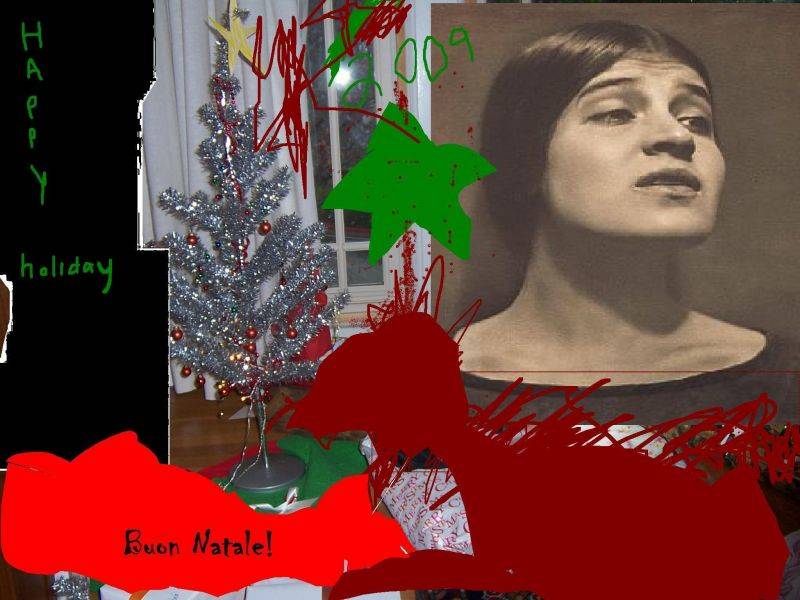Radical Italian American Christmas Cards
Thinking about next year’s holiday cards, I turn to the leftist artists, Tina Modotti and Pietro di Donato.
The other day I noticed this Tina Modotti photograph being sold as a holiday card.

"Baby Nursing," 1926
The image of mother and infant fits the season, of course, but it certainly made me wonder what it means when an art work made by a communist Italian American photographer has become a consumer product for Christmas. (And, yes, I know all about the Italian-Communist-Catholic possibilities.) Then again in the liberal, breastfeeding-friendly Oakland street I was on—Piedmont Avenue—it wasn’t really all that startling.
In his “Photography and Politics,” Rod Purcell reminds us of the social functions of photography that in part
will decide whether the photographs are displayed (in public or private, formally or informally), sent to family or friends, posted on a web site, used as a Christmas card or simply viewed and disposed of (digital snaps taken at a party).
In this case the photograph-as-Christmas card assumed, and to some extent constructed, a consumer who would readily associate that image (even without necessarily knowing who Modotti is) with other political movements as well as a particular aesthetic sensibility, a shopper on the lookout for radicalized Christmas merchandise. Not surprisingly, Modotti-as-Italian-American hero was not in the mix (see some of my other posts, for instance)
It was this casual encounter with someone I think of as an undervalued model for Italian American female identity (and progressive politics generally) that started me thinking about other Italian American radical Christmas references—like, for instance, the presepi created and documented by my i-italy.org-co-blogger Joey Skee, aka Joseph Sciorra.
And so it is in the spirit of the season and with radical Italian American thinkers and artists on my mind that I share a scene from Pietro di Donato’s Christ in Concrete.
Midway through a narrative about backbreaking labor under brutal conditions, fellow traveler di Donato offers a soft-focus image of a simple Christmas celebration. Read out of context, the passage might seem like an exercise in nostalgia, a longing for a past purified of its daily suffering; within the description, however, lies a series of everyday ways families may have come together to recognize Christmas as they negotiated their existence in their adopted country.
Anima had hunted in many stores before she found the small tree. Luigi set it up upon the washtub in the corner of the kitchen, for the other rooms were frigid.
Paul had planned excitedly with Annunziata about presents for the children. Fifty cents each! He spent hours in the five and tens, and Louis accompanied him.
Geremio and Johnny snoozed in the old baby carriage. Joie, Giorgio, and Lucia cut tissue paper and sorted tinsel while Annina carefully hung the fragile Christmas balls.
Annunziata busily mixed the flour, yeast, milk and eggs while Luigi at table gave the dough thumping blows; the dough that would be rolled into strips and fried in sizzling olive oil.
“Children mine, do not cast eye upon them.”
“Why not, mama?”
“It is a sin….And they will not come good!”
They fry, sending out a golden oily fragrance, and brown into thick and thin bubbly misshape.
(Christ in Concrete, pgs. 205-206)
The scene mixes American traditions, like a tree, with Italian food customs like sweet fried dough and thus captures an immigrant Christmas moment.
And me? Well, I’m left wanting to create a series of holiday cards with all my favorite Italian American activist heroes…

Mock-up "Pete Panto Santa Card"





































i-Italy
Facebook
Google+
This work may not be reproduced, in whole or in part, without prior written permission.
Questo lavoro non può essere riprodotto, in tutto o in parte, senza permesso scritto.